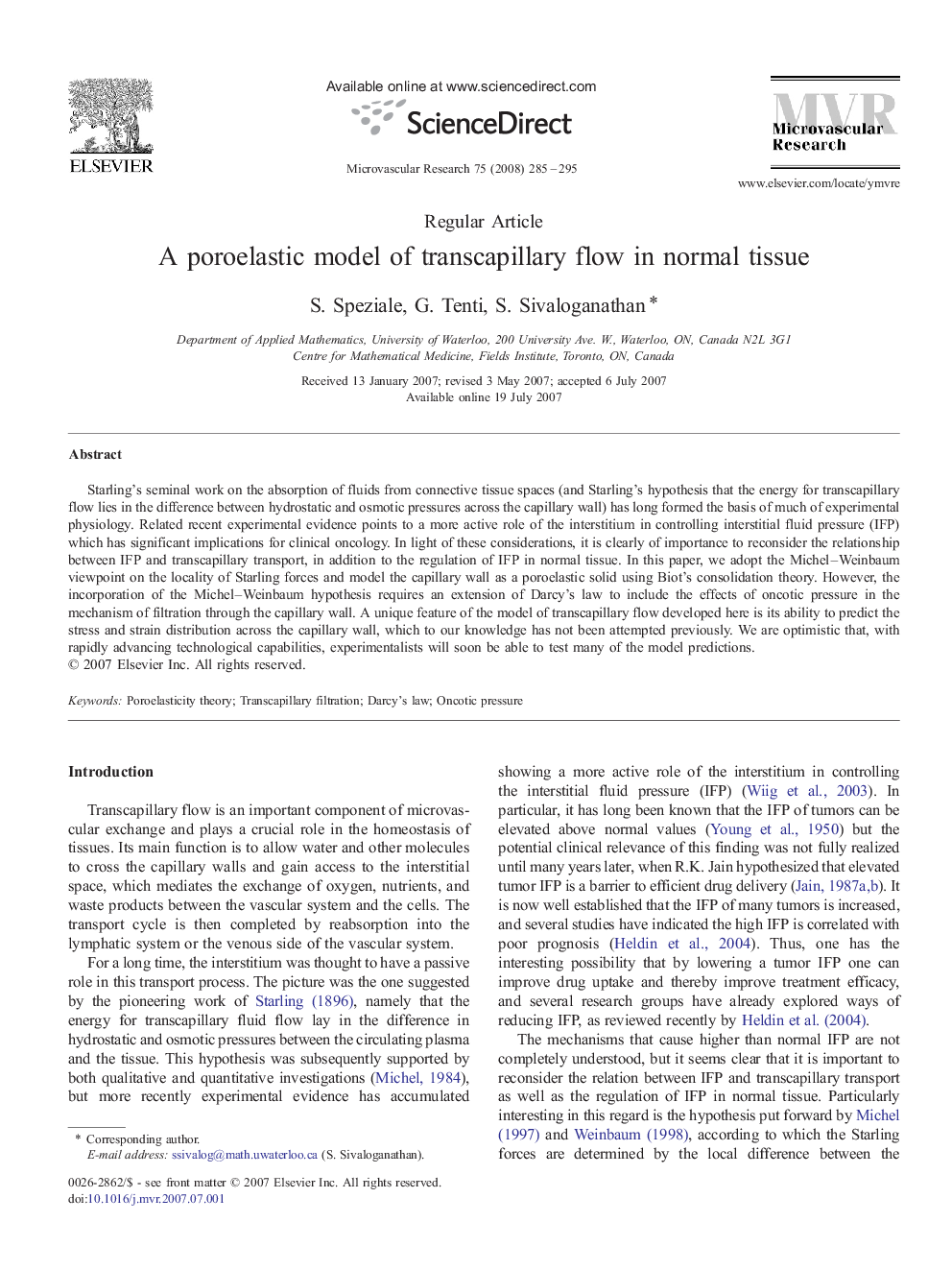| Article ID | Journal | Published Year | Pages | File Type |
|---|---|---|---|---|
| 1995202 | Microvascular Research | 2008 | 11 Pages |
Starling's seminal work on the absorption of fluids from connective tissue spaces (and Starling's hypothesis that the energy for transcapillary flow lies in the difference between hydrostatic and osmotic pressures across the capillary wall) has long formed the basis of much of experimental physiology. Related recent experimental evidence points to a more active role of the interstitium in controlling interstitial fluid pressure (IFP) which has significant implications for clinical oncology. In light of these considerations, it is clearly of importance to reconsider the relationship between IFP and transcapillary transport, in addition to the regulation of IFP in normal tissue. In this paper, we adopt the Michel–Weinbaum viewpoint on the locality of Starling forces and model the capillary wall as a poroelastic solid using Biot's consolidation theory. However, the incorporation of the Michel–Weinbaum hypothesis requires an extension of Darcy's law to include the effects of oncotic pressure in the mechanism of filtration through the capillary wall. A unique feature of the model of transcapillary flow developed here is its ability to predict the stress and strain distribution across the capillary wall, which to our knowledge has not been attempted previously. We are optimistic that, with rapidly advancing technological capabilities, experimentalists will soon be able to test many of the model predictions.
